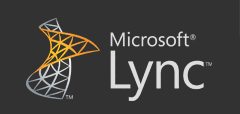 Microsoft Lync (formerly Microsoft Office Communicator) offers a great set of communication tool integrations, making it popular with enterprises both large and small (<300). Unfortunately for many businesses, going beyond Lync Instant Messaging (IM) is proving to be more headache than it’s worth. According to Jeff Wellemeyer, West IP Communications’ executive vice president, most Lync deployments are only of IM, presence, and some audio conferencing.
Microsoft Lync (formerly Microsoft Office Communicator) offers a great set of communication tool integrations, making it popular with enterprises both large and small (<300). Unfortunately for many businesses, going beyond Lync Instant Messaging (IM) is proving to be more headache than it’s worth. According to Jeff Wellemeyer, West IP Communications’ executive vice president, most Lync deployments are only of IM, presence, and some audio conferencing.
Apparently, if you want to deploy audio or video conferencing applications, it becomes one big complicated mess. In eWeek’s article, Wainhouse senior analyst Bill Haskins explains
“The step from Lync as an instant messaging engine to Lync as a conferencing engine and Lync as a PBX, those incremental steps add almost exponential layers of complexity to IT organizations.”
Not only is the internal network not necessarily equipped to handle videoconferencing and other high-demand services, a unique set of equipment is needed to make the connection to those external networks, he said.
“You need specific equipment, specific gateways and you need to be very careful about where you place those elements between your network and the outside network, because anytime someone makes a call now they will be going through that specific network path that you built.”
Source: eWeek
According to a Wainhouse Research survey, over 80 percent of enterprises are using Instant Messaging (IM) for business communications. However only 10 or 15 percent of these same enterprises have deployed the full suite of communication tools (such as audio and video conferencing) available to them through their unified communication (UC) solutions. Sadly, this defeats the whole purpose of choosing an all-in-one solution.
Gartner’s 2012 Unified Communications report advises, “Enterprises considering deploying Lync telephony and video should understand its limitations and infrastructure requirements, how they will support branch offices, and how they will obtain global third-party support if they need it.”
These days there are plenty of cloud-based newcomers who are willing to take the complexity of enterprise-level video conferencing out of your hands TenHands, VidTel, Blue Jeans, Zoom, etc, and of course, my personal favorite: VSee 🙂
Referenced articles
- Some Lync Deployments ‘Stuck In Pilot Phase’ (eWeek)
- firms differ on Microsoft Lync Deployments ‘Stuck in the Pilot Phase’ (FierceEnterpriseCommunications)
- 2012 Magic Quadrant for Unified Communications (Gartner) – evaluations of UI systems A-Z including Avaya, Cisco, IBM, and Huawei
Follow us on Twitter (@VSee) and Like us on Facebook to hear about the latest from VSee!




I don’t agree with your article. Microsoft Lynch is a fantastic Web video conferencing product. Apart from Lynch, there are various other web video conferencing software’s such as WebEx, gomeetnow, gotomeeting, RHUB appliances which one can use for conducting quality webinars, web conferences, video conferences etc.
Thanks, Michael! I agree that Lync is a great video conference product. The problem is complicated deployment, especially if you want to video conference with someone outside of your company. VSee doesn’t have this problem – anyone can download and use securely without any servers to set up.